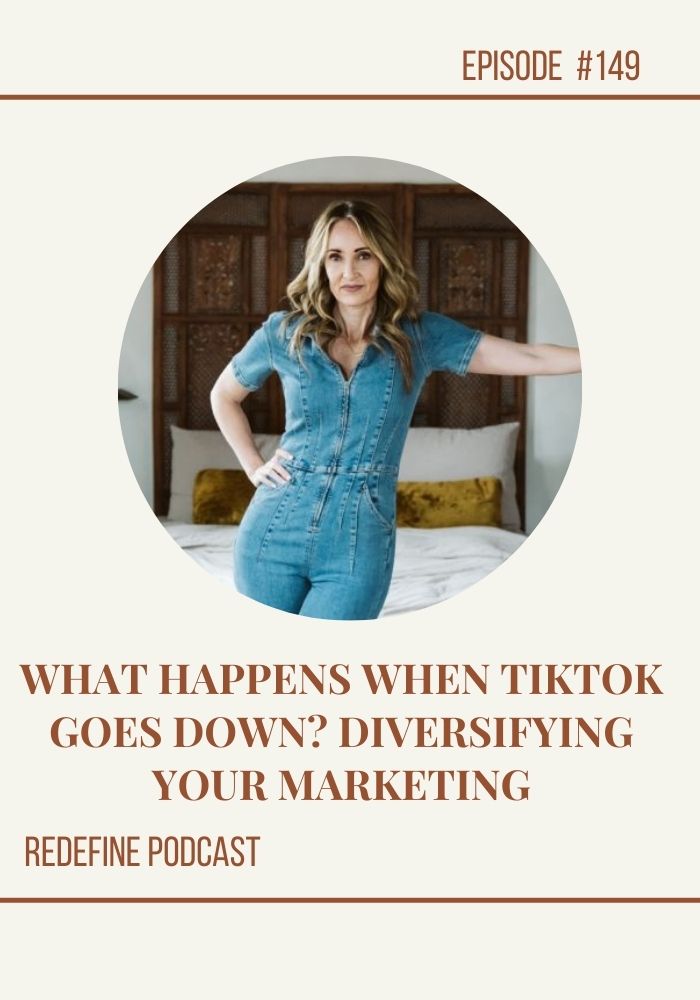
What Happens When TikTok Goes Down? Why Diversifying Your Marketing Is Critical
The last few months there has been a lot of buzz about the government banning TikTok. I think people were absolutely shocked when they went to open up the app early this week and got a notification that it had indeed been banned. In all honesty, this is the one app that I haven’t invested my time in. This reason is equal parts I didn’t want my daughter on it and equal part I didn’t want another app. That hasn’t stopped , 1.5 billion people that are active on TikTok. It has emerged as a dominant platform, offering a space for creative content, and viral trends. However, as we recently witnessed during TikTok’s global outage, relying solely on one platform can leave businesses vulnerable and scrambling for alternatives.
When events like this occur we learn a vital lesson: diversifying your marketing efforts is not just smart—it’s essential. Let’s dive into why diversification matters and how you can protect your business from being overly reliant on any single platform.
The Fragility of Platform Dependence
When TikTok experienced its downtime, businesses and influencers alike felt the ripple effects. Scheduled posts went unseen, ad campaigns halted, and audience engagement plummeted. For businesses heavily dependent on TikTok, this disruption was more than just an inconvenience; it was a wake-up call.
No matter how reliable a platform may seem, it is still a third-party service. Outages, algorithm changes, or even political and regulatory challenges can disrupt your marketing. This fragility means your business’s success should never hinge entirely on one platform.
Why Diversify Your Marketing?
Diversifying ensures your brand continues to thrive even if one channel underperforms or becomes unavailable. Here’s why it matters:
- Reduces Risk: A diversified strategy acts as a safety net. If one platform falters, you can still rely on other channels to maintain customer relationships and revenue.
- Expands Reach: Different platforms cater to different audiences. By diversifying, you broaden your brand’s visibility and engage with various demographics.
- Strengthens Brand Resilience: A multi-channel approach ensures that your brand isn’t entirely at the mercy of one platform, and uncontrollable variables like algorithm changes or outages.
- Boosts ROI: Leveraging multiple channels allows you to analyze performance and allocate resources where they’re most effective.
How to Protect Your Business: 3-5 Actionable Steps
Here are five key strategies to help safeguard your business from over-reliance on any single platform:
1. Build and Prioritize Your Email List
Your email list is one of the most valuable assets your business can own. Unlike social media platforms, where you’re at the mercy of algorithms and outages, your email list is fully under your control.
- Why it matters: Email provides a direct line to your audience. It’s a reliable channel for sharing updates, promoting products, and nurturing relationships.
- How to start: Offer lead magnets like free guides, discounts, or exclusive content to encourage sign-ups. Use tools like ConvertKit, Mailchimp, or ActiveCampaign to manage your list effectively.
- Pro tip: Segment your email list based on customer behavior and preferences to deliver personalized content that converts.
2. Diversify Social Media Platforms
While TikTok may be your primary platform, ensure you have a presence on others like Instagram, YouTube, LinkedIn, Pinterest, or Facebook. Each platform offers unique features and audiences.
- Why it matters: A multi-platform presence reduces dependency and increases your chances of reaching different audience segments.
- How to start: Repurpose your content to fit each platform’s style and audience. For example, a TikTok video can be adapted for Instagram Reels or YouTube Shorts.
- Pro tip: Use scheduling tools like Buffer or Later to streamline your posting across platforms.
3. Invest in Content Marketing
Create evergreen content that lives on your website or blog. This content continues to drive traffic and generate leads long after it’s published.
- Why it matters: Blog posts, podcasts, and videos give you ownership over your content, making your business less reliant on external platforms.
- How to start: Develop a content calendar with topics relevant to your audience. Use SEO strategies to ensure your content ranks well on search engines.
- Pro tip: Focus on creating value-packed, shareable content that establishes your brand as an authority in your niche.
4. Leverage Paid Ads Across Multiple Channels
While organic reach is important, paid advertising can amplify your message across multiple platforms.
- Why it matters: Diversifying your ad spend ensures you’re not putting all your eggs in one basket.
- How to start: Run campaigns on Google Ads, Facebook Ads, and other platforms relevant to your audience.
- Pro tip: Track performance metrics and adjust your budget to focus on high-converting channels.
5. Foster a Community Beyond Social Media
Build spaces where your audience can engage with your brand outside traditional platforms.
- Why it matters: Communities foster loyalty and provide a direct channel for feedback and engagement.
- How to start: Create a private Facebook Group, Slack channel, or Discord server where members can connect and share ideas.
- Pro tip: Offer exclusive benefits, such as Q&A sessions or early product access, to encourage active participation.
Real-World Example: A Business Thrives Despite TikTok’s Downtime
Consider a business that heavily relied on TikTok for marketing but also invested in an email list, a blog, and Instagram. When TikTok went down, they leveraged their email list to communicate with their audience and ran a sale promoted through Instagram Stories. Their blog traffic also surged as customers searched for relevant content. This multi-channel approach ensured they stayed connected with their audience and minimized revenue loss.
Final Thoughts: Don’t Put All Your Eggs in One Basket
TikTok’s recent downtime is a stark reminder of the importance of marketing diversification. While it’s tempting to focus on the platform that’s currently delivering the best results, putting all your trust in one channel is a risky strategy.
Building an email list, diversifying your social media presence, investing in content marketing, running paid ads across multiple platforms, and fostering community connections are all essential steps to ensure your business thrives no matter what challenges come your way.
Remember, the only constant in the digital world is change. By diversifying your marketing, you’re not just protecting your business—you’re setting it up for long-term success.
Sign up for my free training: How I Use AI To Grow and Market My Email List
Join the Conversation
Head on over to my Instagram or Facebook group, Redefine Your Business, and share your thoughts about today’s show. See you again, same time, same place next week!
Resources:
The Meeting Place Membership
Rock The Reels
1:1 Coaching
Free Client Welcome Guide
Additional Trainings and Resources
Connect with Brittni:
Follow me on the Gram – @brittni.schroeder
Join my Facebook Group
Visit my website
Subscribe to my Youtube








